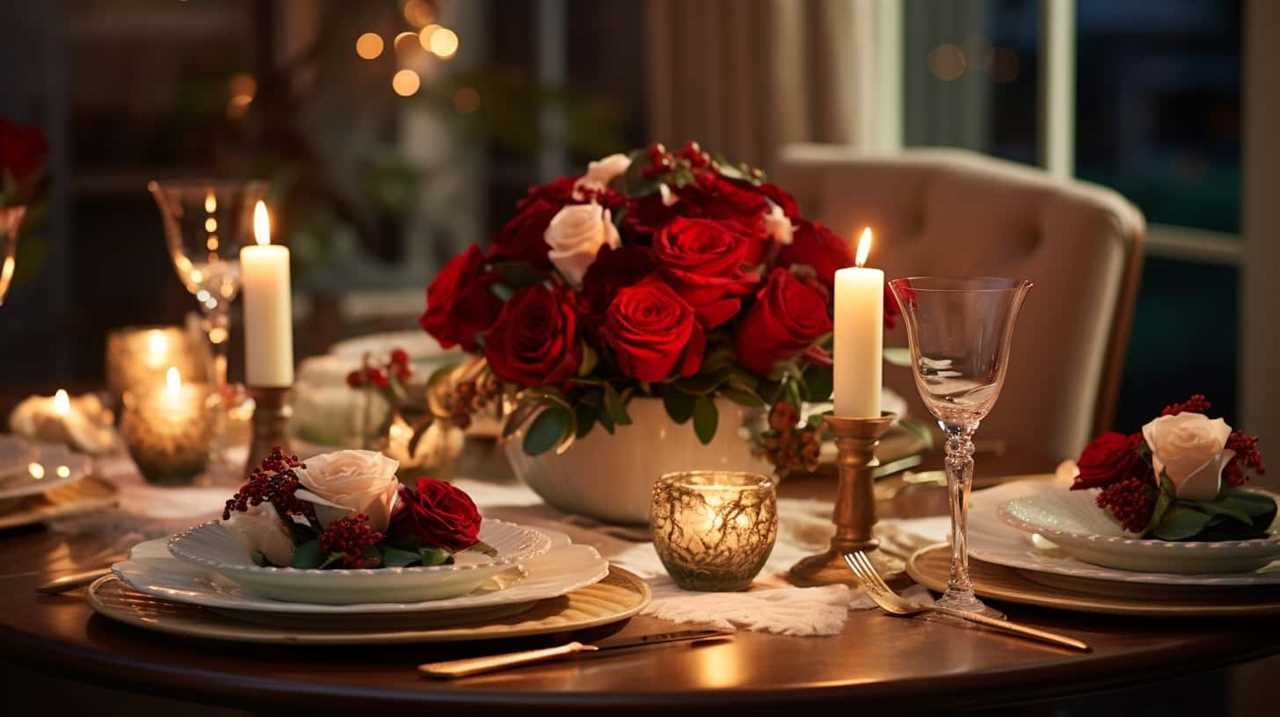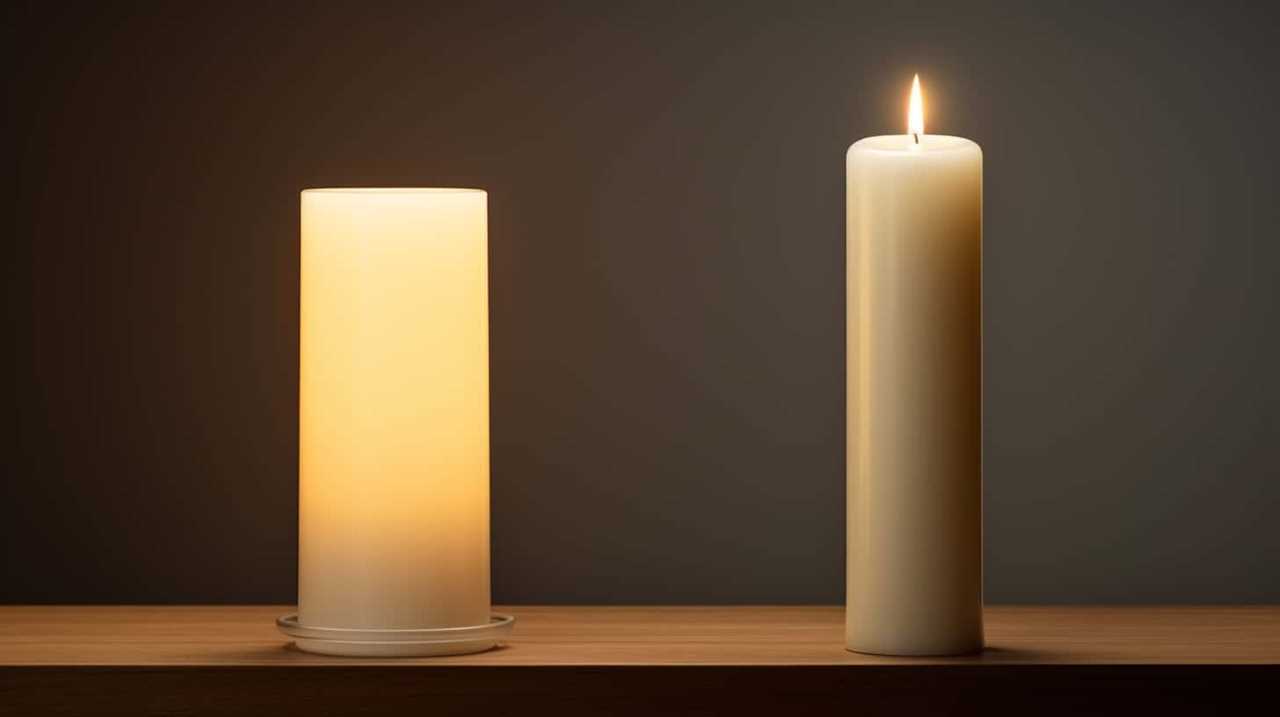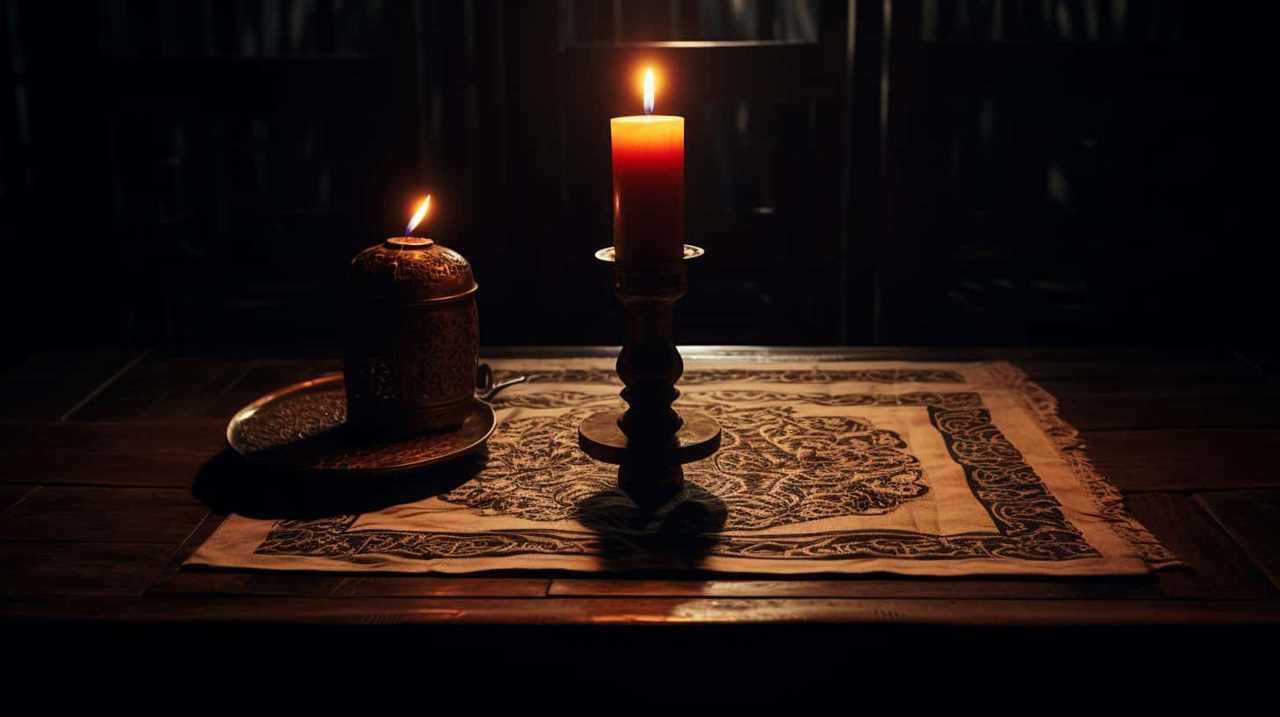Ever thought about the importance of a votive candle? Allow us to shed some light on the subject for you!
A votive candle is a small, usually cylindrical candle that is often used in religious or spiritual practices. These little flickering flames have a rich history and hold great significance in various cultures and religions.
From Christianity to Judaism, and even Islam, votive candles play a vital role in rituals and ceremonies. They are used to symbolize devotion, prayer, and remembrance. Whether you want to create a peaceful atmosphere or honor a loved one, votive candles are a versatile and meaningful choice.
So, if you’re looking for a way to add a touch of spirituality to your life, consider exploring the world of votive candles.

Key Takeaways
- Votive candles have been used for centuries as offerings and symbols of prayer in various ancient civilizations and religious traditions.
- They hold symbolic meanings and provide insight into rich traditions and beliefs across different cultures.
- Votive candles are used in rituals and ceremonies to communicate with the divine, seek protection, blessings, or guidance.
- The flickering flame of votive candles carries prayers and intentions to the spiritual realm.
Origin of Votive Candles
The origin of votive candles dates back to ancient civilizations, where they were used as offerings and symbols of prayer. These candles hold great historical significance and have been an integral part of various cultures and religions throughout history.
Votive candles were commonly used in religious rituals and ceremonies to demonstrate devotion and gratitude to deities or higher powers. The act of lighting a votive candle was seen as a way to communicate with the divine and seek protection, blessings, or guidance.
The symbolism behind these candles lies in their flickering flame, which represents the presence of the divine and the power of prayer. Today, votive candles continue to be used in religious services, personal prayers, and meditative practices, carrying on the ancient tradition and maintaining their profound meaning.
Cultural Significance of Votive Candles
Now, let’s explore the cultural significance of votive candles.
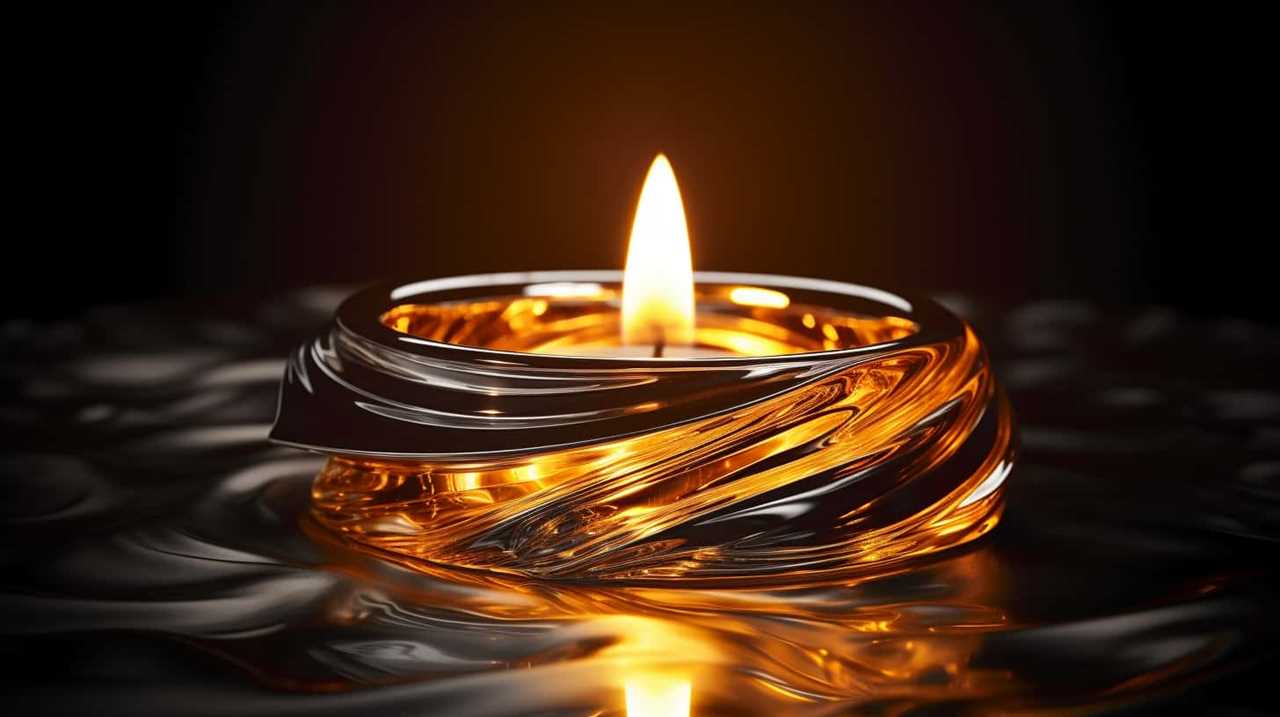
These candles have been used in various rituals across different cultures, serving as a way to connect with the divine or honor ancestors.
They hold symbolic meanings, representing prayers, intentions, or offerings.
Understanding the historical origins and practices surrounding votive candles can provide insight into the rich traditions and beliefs associated with them.
Ritualistic Uses of Votives
Rituals involving votive candles hold significant cultural importance for many communities. These ritualistic practices are steeped in spiritual symbolism, serving as a way to connect with the divine and express devotion. Votive candles are commonly used in various ceremonies and religious traditions, symbolizing prayers, intentions, and offerings. They are lit to invoke blessings, seek guidance, or commemorate loved ones. The act of lighting a votive candle is seen as a sacred gesture, representing the illumination of the spirit and the presence of the divine. It is believed that the flickering flame carries the prayers and intentions to the spiritual realm. The table below showcases some examples of cultural rituals involving votive candles:
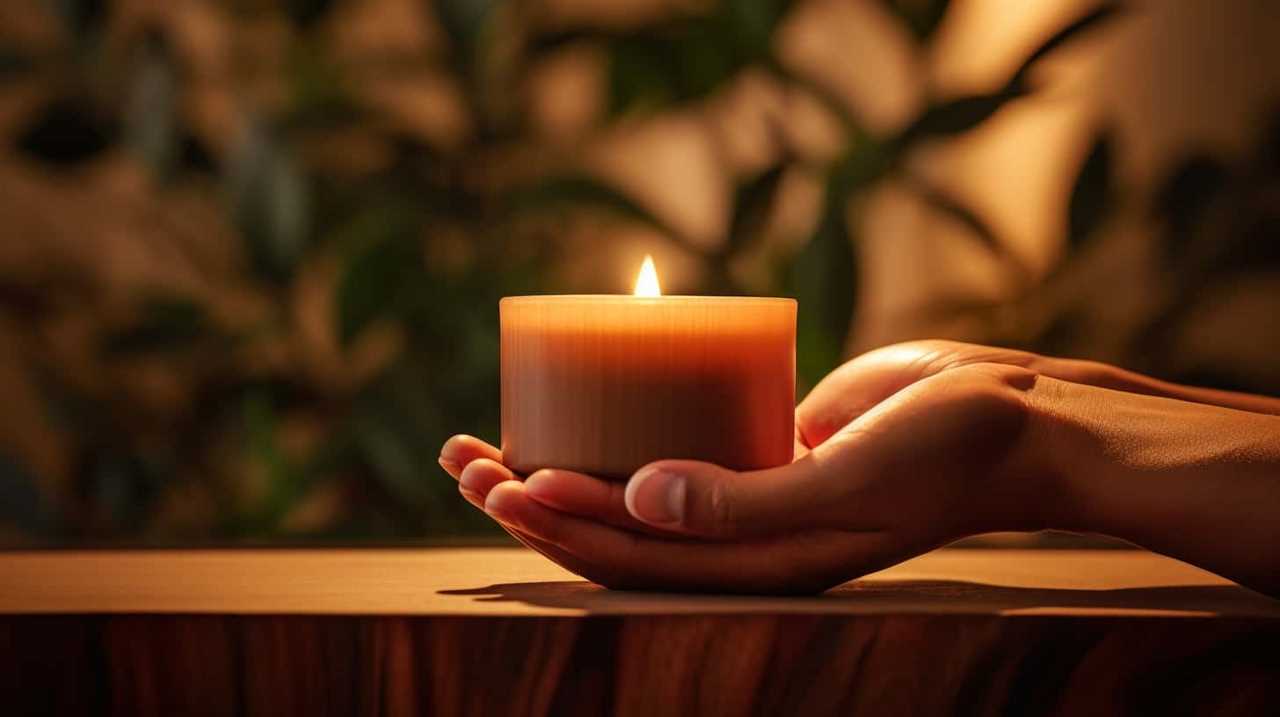
| Tradition | Ritual |
|---|---|
| Catholicism | Lighting votive candles in churches |
| Buddhism | Offering candles to Buddha statues |
| Day of the Dead (Mexico) | Placing votive candles on graves |
| Hinduism | Lighting diyas during festivals |
| Paganism | Using candles in spellwork and rituals |
These rituals not only hold deep spiritual significance but also foster a sense of community and connection among believers.
Symbolism in Votives
Symbolism in votives plays a crucial role in understanding the cultural significance of votive candles. Votive candles have been used for centuries in various rituals and ceremonies, each carrying its own symbolic meaning. These candles are often lit as a form of prayer or offering, representing the individual’s intentions and desires.
The act of lighting a votive candle is seen as a spiritual practice, a way to connect with a higher power or divine energy. The flickering flame is believed to symbolize the presence of the divine and serves as a reminder of the power of faith and hope.
Different colors and scents of votive candles may also hold symbolic value, representing specific intentions or invoking certain energies. The symbolism in votives adds depth and meaning to the rituals in which they’re used, making them an integral part of various spiritual practices.
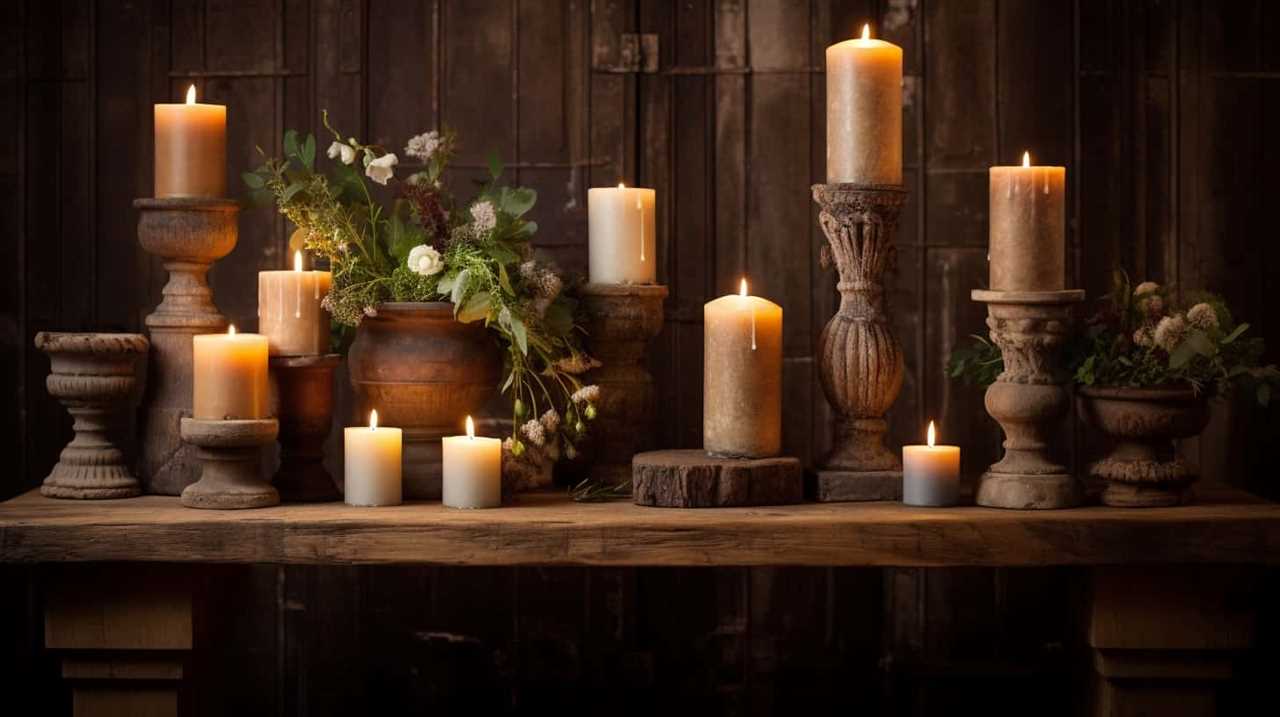
Historical Origins and Practices
One significant aspect of votive candles is their historical origins and the cultural practices associated with them. Votive candles have a rich history that dates back centuries. In ancient times, people would light candles as offerings to their gods, believing that the flickering flame would carry their prayers and wishes to the divine realm. This practice has since evolved and is still observed today in various cultures and religions.
Here are five cultural practices and historical facts related to votive candles:
- In Catholicism, votive candles are often lit in churches as a symbol of prayer and devotion to saints.
- In Mexican culture, votive candles are commonly used during Day of the Dead celebrations to honor deceased loved ones.
- Votive candles are often seen in Hindu temples, where they’re lit to invoke blessings from deities.
- In Buddhist temples, votive candles are lit to represent the illumination of wisdom and enlightenment.
- Votive candles were also used in ancient Greece and Rome to honor the gods and seek their favor.
These cultural practices and historical traditions showcase the enduring significance of votive candles across different societies and belief systems.
Votive Candles in Christianity
In Christianity, lighting votive candles serves as a way for us to express our prayers and intentions. Votive candles hold a significant place in the everyday life of Christians, symbolizing the presence of God and the light of Christ. These candles are often found in churches, chapels, and even in homes, providing a tangible representation of our faith and devotion.
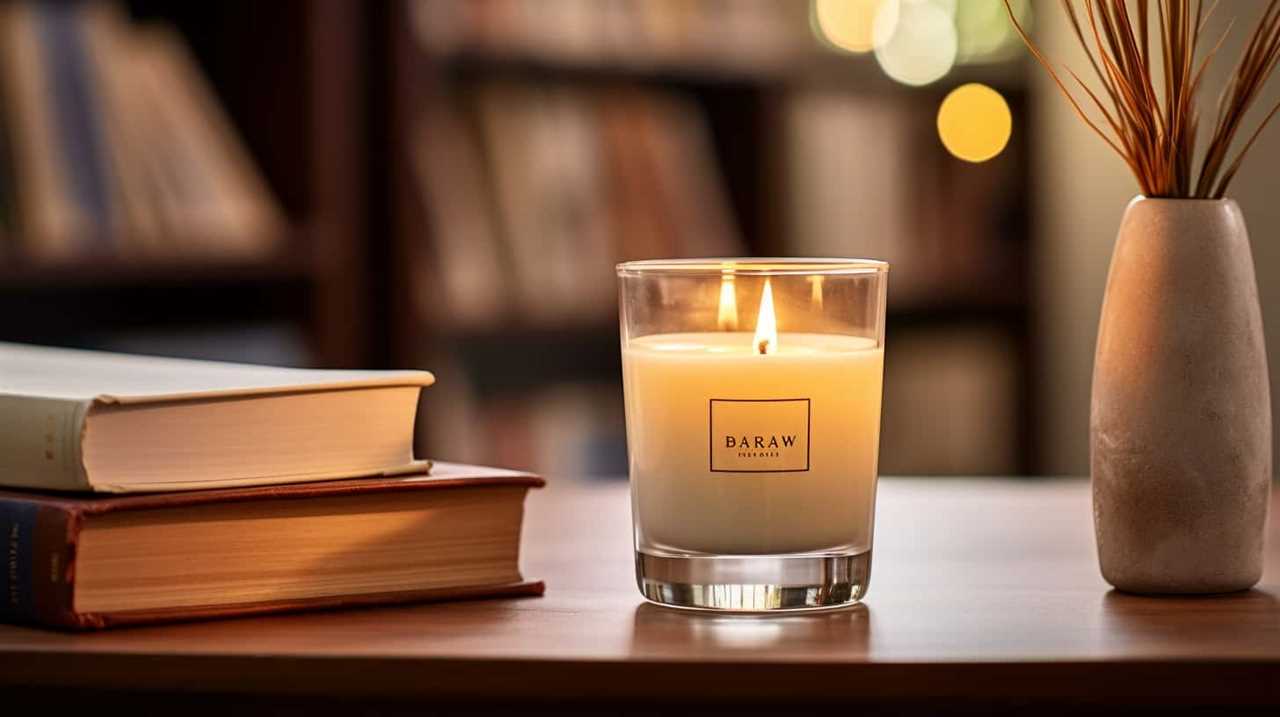
Lighting a votive candle before an image of a saint or a crucifix is a common practice, signifying our desire for intercession and guidance. The act of lighting a candle and offering our intentions is seen as a form of communication with God, allowing us to express our hopes, gratitude, and struggles. The flickering flame reminds us of the divine presence and the power of prayer.
Votive Candles in Judaism
Votive candles also hold significance in Judaism, representing our connection with the divine and serving as a means of expressing our prayers and devotion. In Jewish tradition, votive candles are commonly used during prayer and worship.
Here are some ways in which votive candles are used in Judaism:
- Lighting a votive candle before prayer is a way to focus our thoughts and intentions, creating a sacred space for communication with God.
- Votive candles are often lit in synagogues or at home to mark special occasions and celebrations, such as Shabbat or Jewish holidays.
- Lighting a votive candle can be a symbol of remembrance, honoring the memory of loved ones who’ve passed away.
- Some Jewish traditions involve saying a blessing while lighting the candle, infusing it with spiritual significance.
- Votive candles can also be used to express gratitude and thankfulness, offering a tangible representation of our appreciation to God.
Through the use of votive candles, Jewish individuals can deepen their connection to prayer and express their devotion and gratitude in a tangible way.
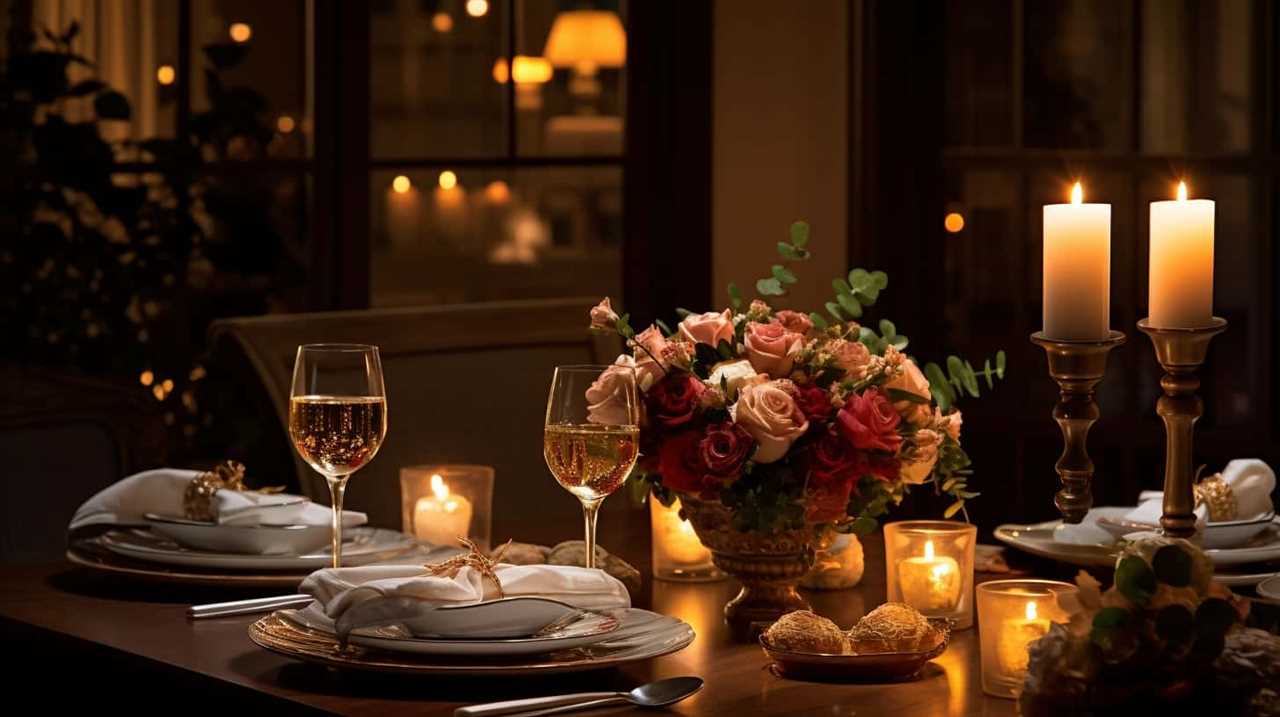
Votive Candles in Islam
Votive candles hold significant importance in Islamic worship. They are used in various cultural and religious practices. These candles are often lit as a form of prayer or supplication to seek blessings, guidance, or protection from Allah. They play a vital role in creating a serene and spiritual atmosphere during religious ceremonies. Votive candles are a visual representation of devotion and faith in Islam.
Significance in Worship
While lighting votive candles remains an integral practice in Islamic worship, their significance extends beyond mere illumination. These candles hold symbolic meanings and play a crucial role in prayer. Here are five reasons why votive candles hold such significance in Islamic worship:
- Symbolic representation of divine presence: Votive candles are lit to symbolize the presence of Allah during prayer, serving as a visual reminder of His divine light.
- Focus and concentration: The gentle glow of the candle flame helps worshippers to center their thoughts and maintain focus during prayer.
- Spiritual purification: Lighting a votive candle is believed to cleanse the soul and purify the worshipper’s intentions before engaging in prayer.
- Connection to the Prophet Muhammad: It’s believed that the Prophet Muhammad himself would light candles as an act of remembrance and devotion.
- Commemoration of religious events: Votive candles are often lit to mark special occasions and religious celebrations, serving as a way to honor and remember important events in Islamic history.
Understanding the significance of votive candles in Islamic worship provides a deeper insight into the cultural and religious practices of the Islamic faith.
Cultural and Religious Practices
One important aspect of votive candles in Islam is their role in cultural and religious practices. Votive candles are commonly used in ritual practices within the Islamic faith. These candles hold cultural symbolism and are often used to mark special occasions or events. They’re lit to honor and pay tribute to important figures in Islamic history, such as prophets and saints.
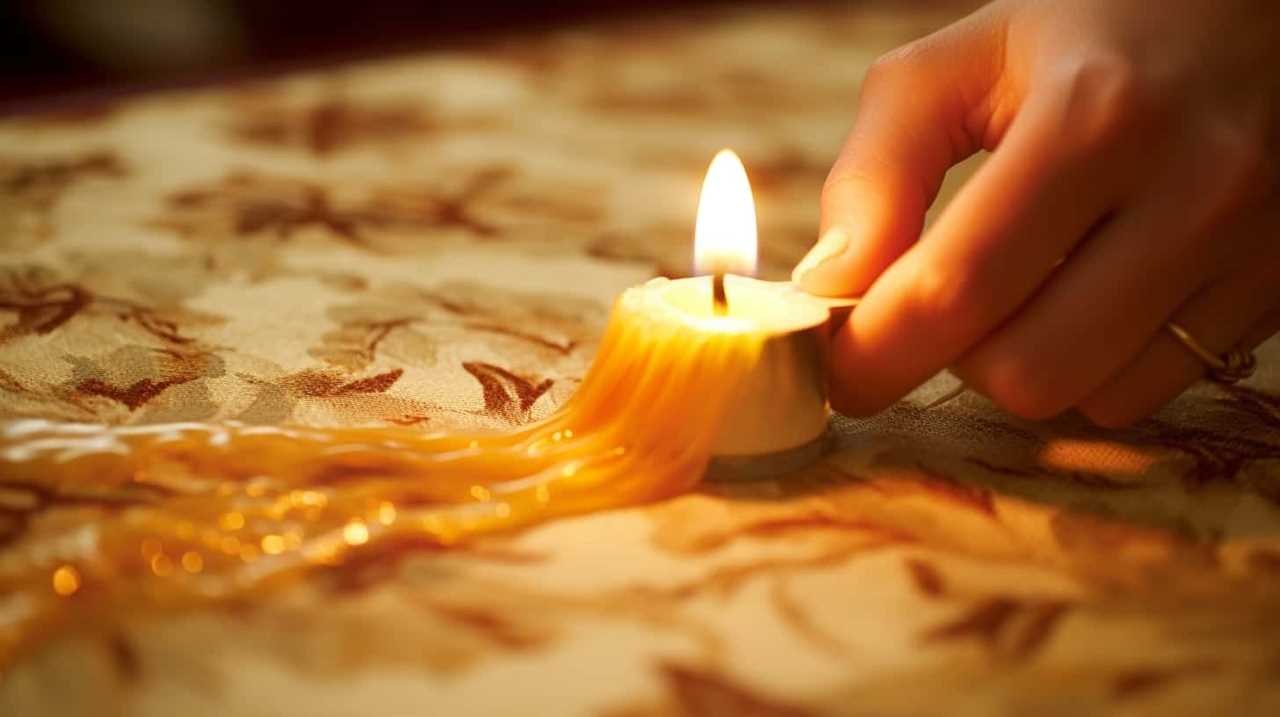
Votive candles are also used during prayers and meditation, as they’re believed to create a calming and spiritual atmosphere. The act of lighting a votive candle is seen as a form of devotion and supplication. It allows individuals to focus their thoughts and intentions, and to seek guidance and blessings.
Votive candles in Islam aren’t only a religious tool but also a significant part of cultural traditions, fostering a sense of community and unity among believers.
Votive Candles in Hinduism
In Hinduism, we use votive candles for various religious rituals and ceremonies. Votive candles hold great significance in worship and are considered a vital part of our religious practices. Here are five reasons why votive candles are important in Hinduism:
- Symbolism: Votive candles symbolize the divine presence and act as a medium to connect with the deities.
- Invocation: Lighting a votive candle signifies invoking the divine energy and seeking blessings.
- Purification: The flame of the votive candle is believed to purify the environment and sanctify the space.
- Devotion: Lighting a votive candle is an act of devotion and surrender to the divine power.
- Offering: Votive candles are often accompanied by other offerings, such as flowers and incense, as a way to express reverence and gratitude.
Through the use of votive candles, we deepen our connection with the divine and find solace in our religious practices.
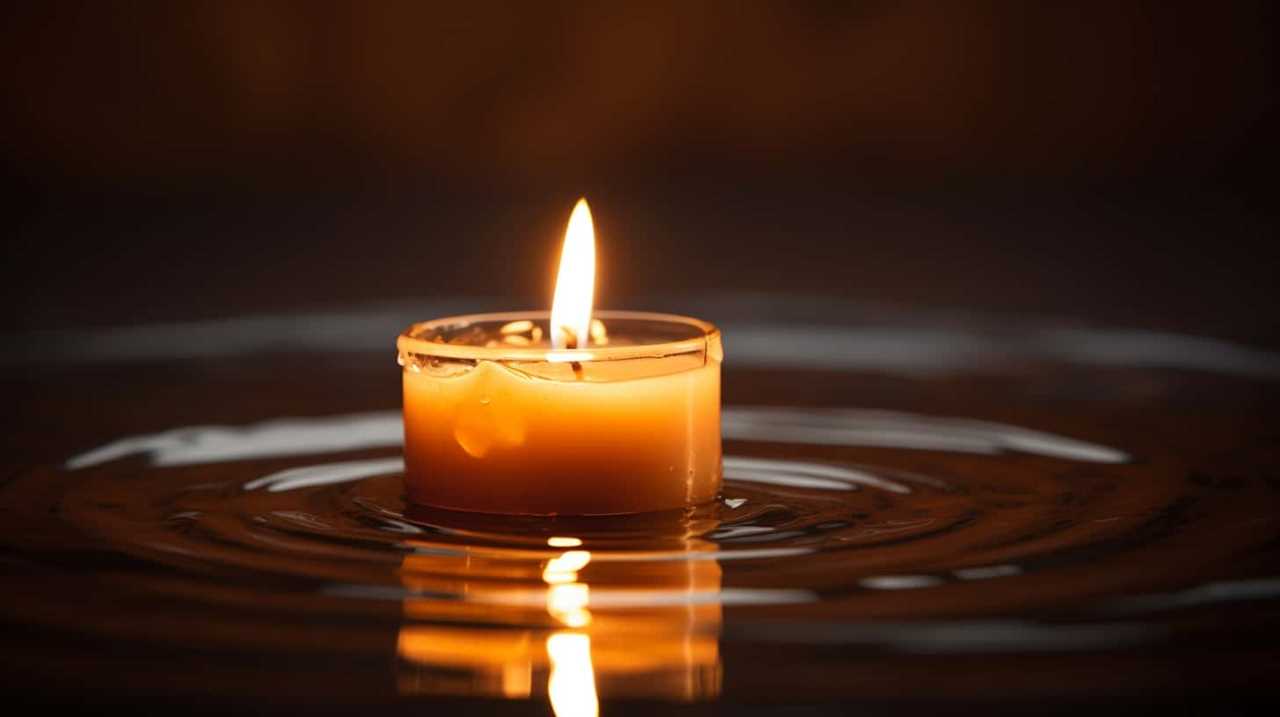
Votive Candles in Buddhism
Votive candles play a significant role in Buddhist rituals and ceremonies, enhancing our spiritual connection and fostering a sense of tranquility and mindfulness. In Buddhism, votive candles are often used in meditation and mindfulness practices to create a peaceful and focused environment. The soft glow of the candle flame can help to calm the mind and bring a sense of serenity during meditation sessions. The act of lighting a votive candle can also serve as a symbolic gesture, representing the illumination of wisdom and the dispelling of ignorance. Additionally, votive candles are often placed on altars or shrines as offerings to the Buddha and other enlightened beings. This act of devotion and reverence helps to cultivate a deeper connection to the spiritual realm.
| Votive Candles in Buddhism | Benefits |
|---|---|
| Enhances meditation | Promotes focus and relaxation |
| Cultivates mindfulness | Creates a peaceful environment |
| Symbolizes wisdom | Represents devotion and reverence |
| Fosters spiritual connection | Enhances the spiritual experience |
Votive Candles in Paganism
Continuing from Buddhism, the use of votive candles in Paganism enhances our connection to the spiritual realm and fosters a sense of sacredness and reverence. In Pagan rituals, votive candles hold deep symbolic meaning, representing various aspects of nature, deities, and the divine. Here are five emotional aspects of votive candles in Paganism:
- Transformation: The flickering flame symbolizes the transformative power of fire and the ever-changing nature of life.
- Protection: Lighting a candle can create a protective barrier against negative energies and invoke the presence of spiritual guardians.
- Manifestation: The act of lighting a votive candle is a powerful tool for manifesting desires and intentions.
- Devotion: Lighting a candle in honor of a specific deity or spirit is an act of devotion and reverence.
- Connection: Votive candles serve as a physical representation of the connection between the mortal and the divine, bridging the gap between the earthly and spiritual realms.
Through these symbolic gestures, votive candles play a vital role in Pagan rituals, allowing practitioners to engage in spiritual practices and connect with the sacred forces in the universe.
Votive Candles in Mexican Culture
Moving on to the cultural context of votive candles, let’s delve into their significance in Mexican traditions. Candle lighting traditions play a vital role in Mexican culture, with votive candles being a prominent feature. These candles are often used as offerings in religious ceremonies and rituals.
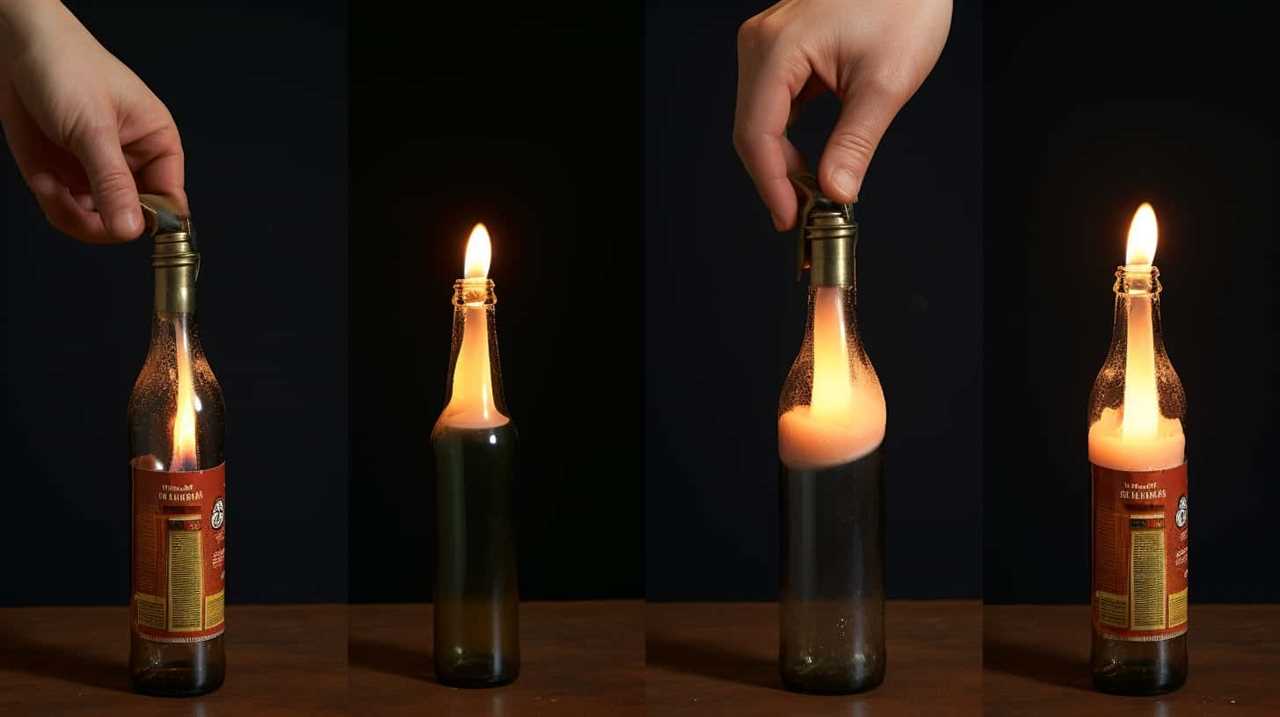
In Mexican culture, the act of lighting votive candles is seen as a way to communicate with and seek guidance from the divine. It’s believed that the flickering flame represents the connection between the earthly realm and the spiritual realm. Votive candle offerings are made in churches, shrines, and even at home altars.
They’re used to express gratitude, make requests, or ask for protection and healing. The warm glow of these candles creates a serene and sacred atmosphere, inviting individuals to connect with the divine.
Votive Candles in Native American Traditions
In Native American traditions, we often incorporate votive candles as a regular part of our spiritual practices. These candles hold great significance in our worship, symbolizing our connection to the spiritual realm and serving as a channel for our prayers and intentions.
Here are some key points about votive candles in Native American traditions:
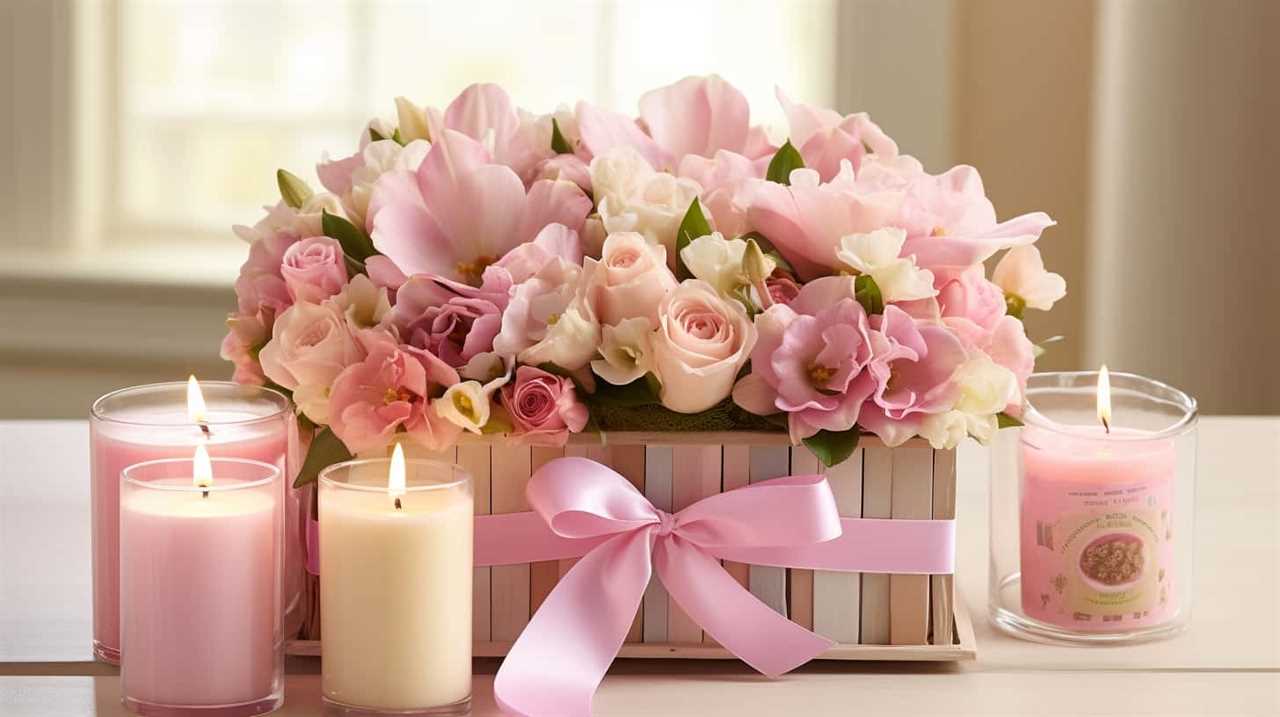
- Votive candles are often used in ceremonies and rituals to honor our ancestors and seek their guidance.
- The flickering flame represents the presence of the divine and serves as a beacon of light in our spiritual journey.
- The act of lighting a votive candle is a form of offering, expressing our gratitude and devotion to the spirits.
- Votive candles are often placed on altars or sacred spaces, creating a sacred atmosphere and inviting spiritual energy.
- The burning of votive candles is believed to cleanse and purify our surroundings, bringing balance and harmony to our lives.
Through the use of votive candles, we strive to deepen our connection with the spiritual realm and find solace, guidance, and inspiration in our native traditions.
Different Types of Votive Candles
When it comes to votive candles, there are a few different options to consider.
First, there’s the size of the candle itself. Votive candles come in various sizes, allowing you to choose the one that best fits your needs.
Additionally, there are decorative votive holders available, which can enhance the ambiance and aesthetic appeal of your space.
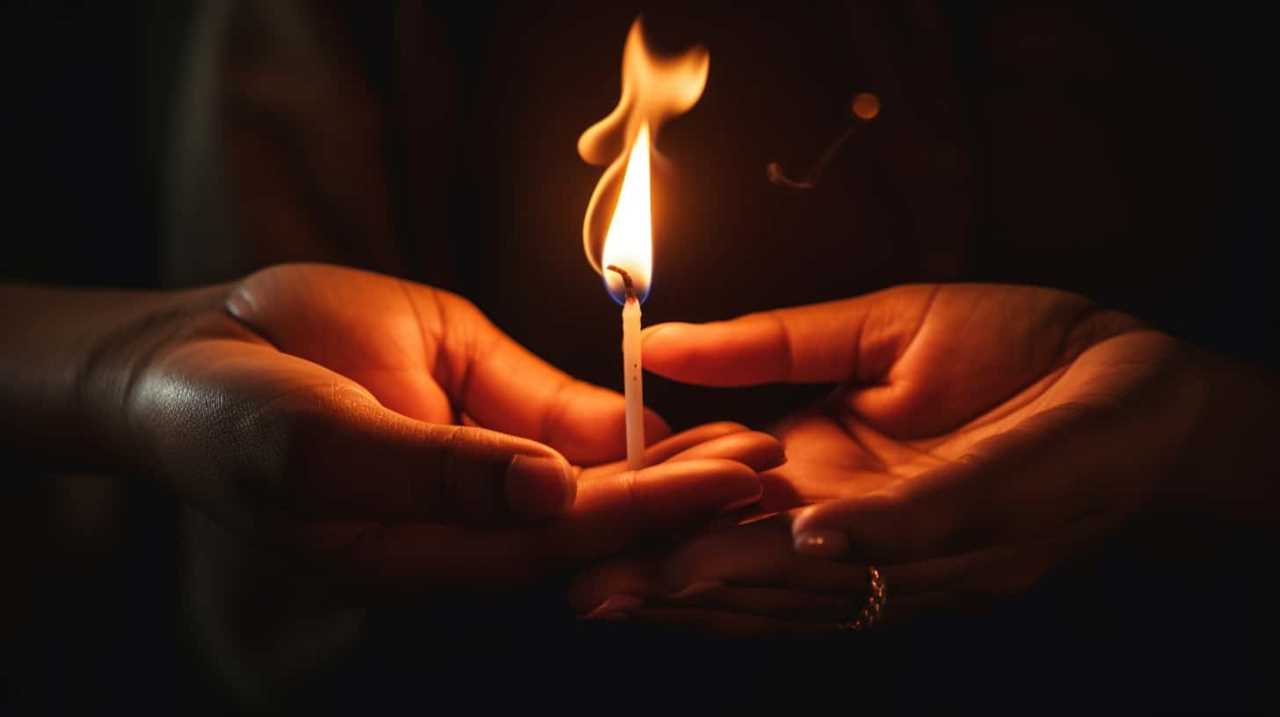
Candle Size Options
For our discussion on the subtopic of candle size options for votive candles, let’s explore the various dimensions available.
When it comes to votive candles, you have a range of sizes to choose from. Here are some options to consider:
- Standard size: These votive candles typically measure around 2 inches in diameter and 2.5 inches in height. They’re the most common size and fit perfectly in most decorative votive holders.
- Mini size: If you’re looking for a smaller option, mini votive candles are perfect. They’re usually around 1.5 inches in diameter and 1.5 inches in height. These smaller candles can be used to create a more delicate and intimate ambiance.
- Jumbo size: On the other end of the spectrum, jumbo votive candles are larger and more substantial. They can measure up to 3 inches in diameter and 3 inches in height, making them a striking centerpiece for any occasion.
- Tea light size: While not exactly votive candles, tea lights are often used interchangeably. These small round candles measure around 1.5 inches in diameter and 0.5 inches in height. They’re perfect for creating a warm and cozy atmosphere.
- Floating size: For a unique touch, you can opt for floating votive candles. These candles are designed to float in water and come in various sizes, from small to large. They can add a magical and ethereal touch to your decor.
With these candle size options, you can choose the perfect votive candles to fit your decorative votive holders and create the desired ambiance for any occasion.
Decorative Votive Holders
Let’s now explore the different types of votive candles and their corresponding decorative votive holders. Votive candles come in various shapes, sizes, and designs, making them versatile for any occasion or décor style.

When it comes to decorative votive holders, the options are endless. From elegant glass holders to rustic mason jars, there’s something to suit every taste and aesthetic. These holders not only enhance the beauty of the votive candle but also provide a safe and stable base for it.
If you’re feeling creative, you can even try some DIY votive candle ideas, such as using empty wine bottles or teacups as unique holders.
Now that we’ve explored the different types of votive candles and their decorative holders, let’s delve into how votive candles are used in rituals.
How Votive Candles Are Used in Rituals
We often incorporate votive candles into our rituals to enhance the atmosphere and create a sense of sacredness. Votive candles have a deep symbolism in rituals, representing our intentions and prayers. They play a significant role in meditation, helping us focus and find inner peace.
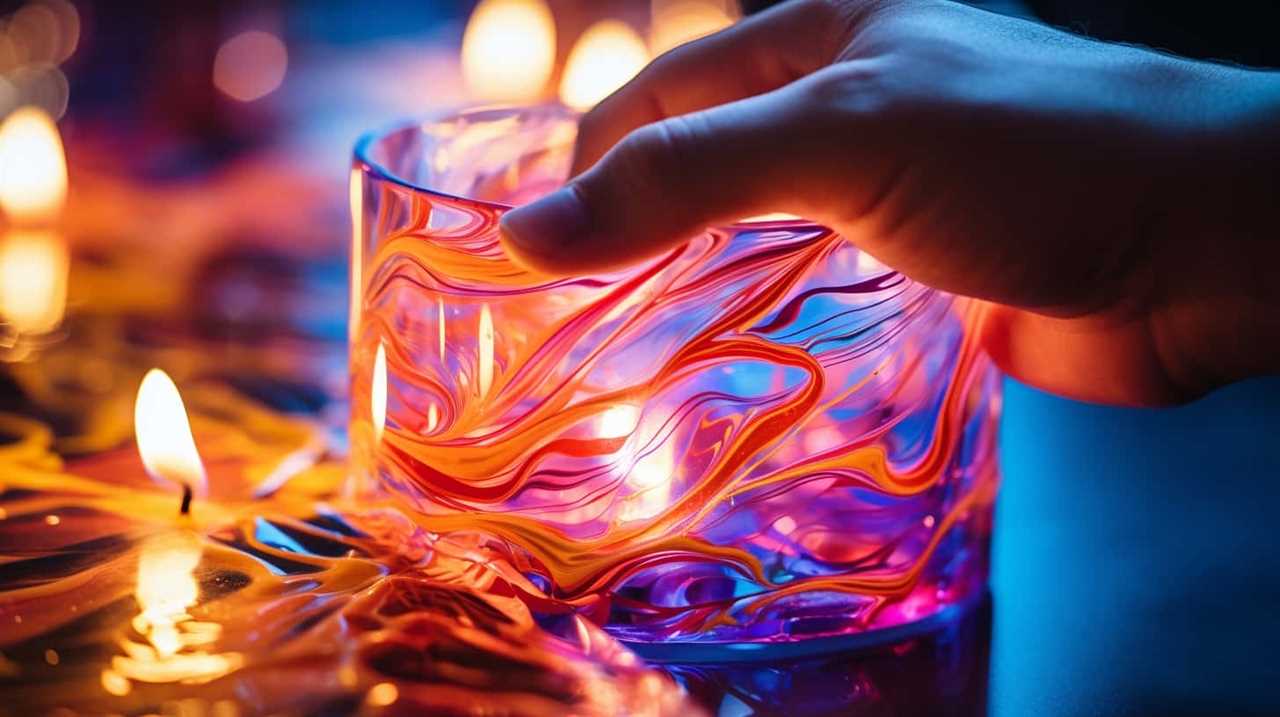
Here are five ways votive candles are used in rituals:
- Setting the mood: The gentle flickering flame creates a calming ambiance, allowing us to connect with our spiritual selves.
- Honoring ancestors: Lighting a votive candle can be a way to pay homage to our loved ones who’ve passed, keeping their memory alive.
- Invoking blessings: By lighting a votive candle, we invite positive energy and divine intervention into our lives.
- Expressing gratitude: Lighting a votive candle can be a way to express gratitude for the blessings we’ve received.
- Manifesting intentions: Votive candles serve as a physical representation of our desires, helping us manifest them into reality.
Incorporating votive candles into our rituals allows us to deepen our spiritual connection and create a space for reflection and transformation.
Symbolism of Votive Candles
Let’s explore the symbolism of votive candles and their spiritual significance.
The various ritual uses they have and the cultural interpretations they hold.
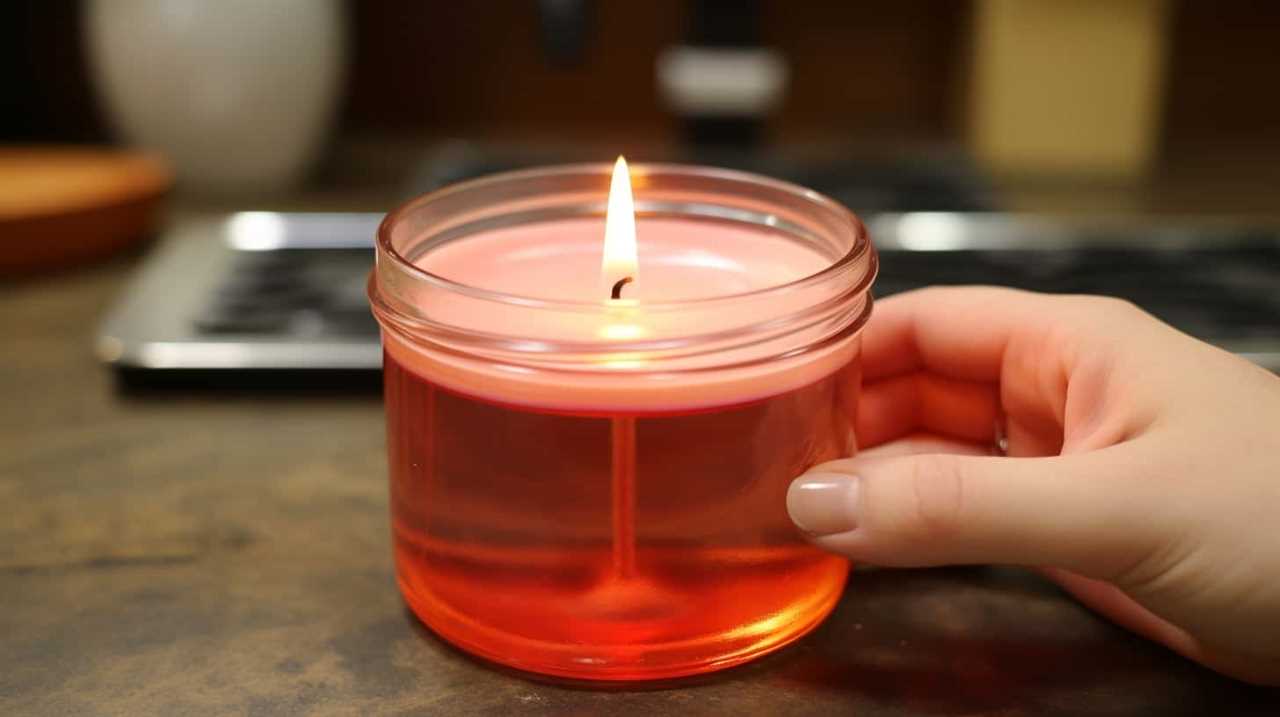
Votive candles are more than just sources of light; they’re powerful symbols that represent devotion, prayer, and intention.
Whether used in religious ceremonies, personal rituals, or cultural traditions, votive candles carry deep meaning and serve as a tangible way to connect with something greater than ourselves.
Spiritual Significance of Votives
As we delve into the spiritual significance of votives, it’s essential to explore the symbolism that these candles hold. Votive candles have been used in various spiritual practices and religious customs for centuries, carrying deep meaning and evoking powerful emotions. Here are five key aspects of their symbolism:
- Light: Votives represent the divine light and are often lit to symbolize the presence of a higher power or spiritual energy.
- Prayer: Lighting a votive candle is a way to offer prayers and intentions to the divine, seeking guidance, protection, or healing.
- Remembrance: Votives can serve as tributes to loved ones who’ve passed away, keeping their memory alive and honoring their spirits.
- Transformation: The act of lighting a votive candle can signify a desire for personal transformation, inviting spiritual growth and inner change.
- Unity: In certain traditions, votives are lit collectively to create a sense of unity among worshippers, symbolizing the interconnectedness of all beings.
The symbolism of votive candles adds depth and significance to spiritual practices, allowing individuals to connect with the divine and express their deepest emotions and desires.
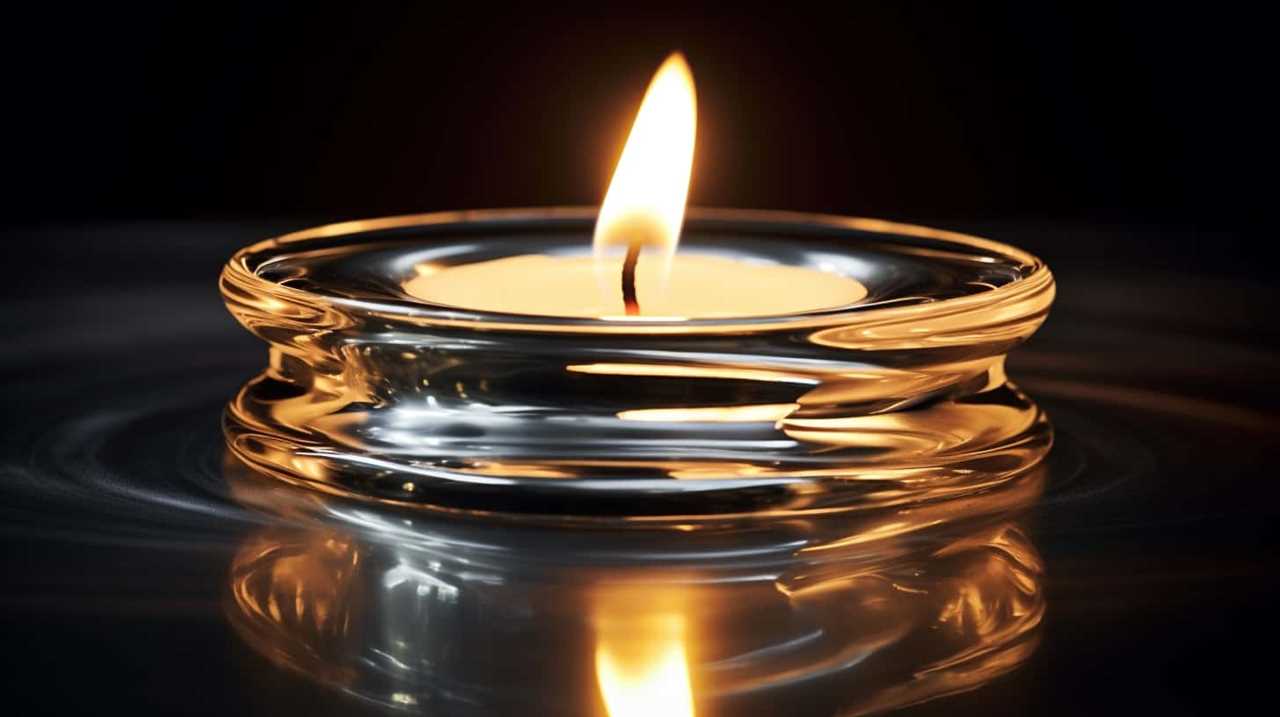
Ritual Uses of Votives
One common ritual use of votive candles is to enhance the ambiance and create a sacred atmosphere during spiritual practices. Votive candles have been used in various cultures throughout history, each with its own unique symbolism in rituals. Here is a table showcasing some historical practices in different cultures:
| Culture | Symbolism | Ritual |
|---|---|---|
| Ancient Egyptians | Symbolized offerings to the gods | Placed in temples and tombs |
| Ancient Greeks | Represented prayers and petitions | Lit during religious ceremonies |
| Catholicism | Signified prayers and intentions | Lit in churches and shrines |
| Hinduism | Symbolized devotion and enlightenment | Offered during puja ceremonies |
These examples illustrate the diverse ways in which votive candles have been incorporated into rituals across cultures. Whether it is to express gratitude, seek divine intervention, or create a reverent atmosphere, the symbolism of votive candles adds a profound layer of meaning to spiritual practices.
Cultural Interpretations of Votives
Votive candles hold symbolic significance in various cultures, representing diverse cultural interpretations and beliefs. These cultural practices and votive candle symbolism can evoke a range of emotions in individuals:
- Spiritual Connection: Votive candles are used to establish a connection with the divine, serving as a physical representation of prayers and intentions.
- Remembrance: Lighting a votive candle can be a way to honor and remember loved ones who’ve passed away, providing solace and comfort.
- Protection: Votive candles are believed to ward off negative energy and bring protection to individuals and their homes.
- Celebration: In festive occasions, votive candles are lit to symbolize joy, unity, and gratitude.
- Meditation and Reflection: Lighting votive candles during meditation or personal reflection can create a peaceful and serene atmosphere, aiding in mindfulness and self-discovery.
These cultural interpretations of votives demonstrate the universal human need for connection, remembrance, protection, celebration, and inner peace.
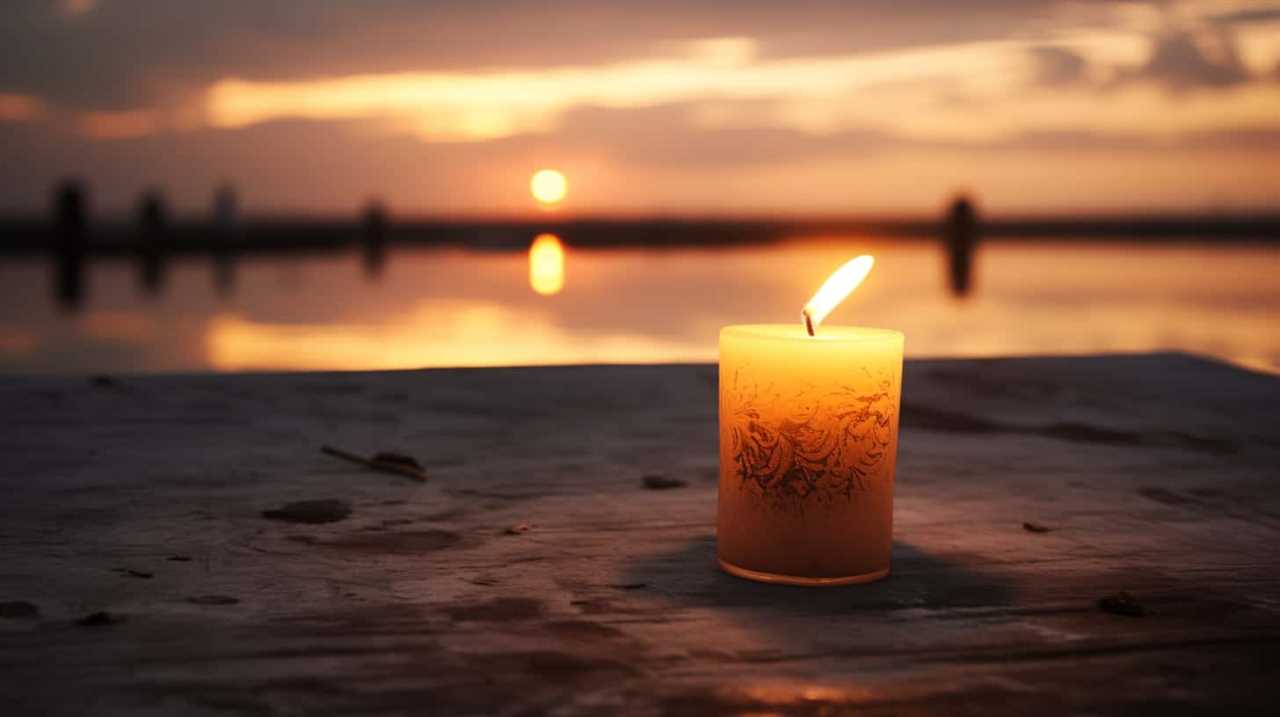
DIY Votive Candle Ideas
We have come up with some creative ideas for making your own votive candles using common household items.
DIY votive candle holders can be made by repurposing empty glass jars, such as mason jars or baby food jars. Simply clean the jars thoroughly and decorate them with paint, ribbons, or even decoupage.
For votive candle crafts, you can experiment with different types of wax. One option is to melt down old candles and pour the wax into your homemade holders. Another option is to use soy wax, which is eco-friendly and easy to work with.
Add fragrance oils or essential oils to create scented votive candles, or mix in dried flowers or herbs for a decorative touch.

With these DIY ideas, you can customize your votive candles to match your style and create a cozy atmosphere in your home.
Where to Buy Votive Candles
After exploring DIY votive candle ideas, it’s important to consider where to purchase votive candles for those who prefer a ready-made option. Here are some great places to buy votive candles:
- Local craft stores: These stores often have a wide variety of votive candles in different colors, scents, and sizes. Plus, you can support local businesses.
- Online retailers: Websites like Amazon and Etsy offer a vast selection of votive candles, allowing you to easily browse and compare different options from the comfort of your own home.
- Home decor stores: Retailers like Bed Bath & Beyond and Pier 1 Imports carry votive candles that can complement your home decor.
- Supermarkets: Some supermarkets have a small section dedicated to candles, including votive candles. It’s a convenient option if you need candles while grocery shopping.
- Party supply stores: If you’re planning an event and need a large number of votive candles, party supply stores like Party City often sell them in bulk.
Frequently Asked Questions
How Long Do Votive Candles Typically Burn For?
Votive candles typically burn for 8-10 hours. Factors affecting burn time include the wax type, wick size, and ambient conditions. Understanding these factors helps us choose the right candle for our needs.
Can Votive Candles Be Scented?
Yes, scented votive candles can add a pleasant aroma to any space. The benefits of using scented candles include creating a relaxing atmosphere, masking unpleasant odors, and enhancing mood.
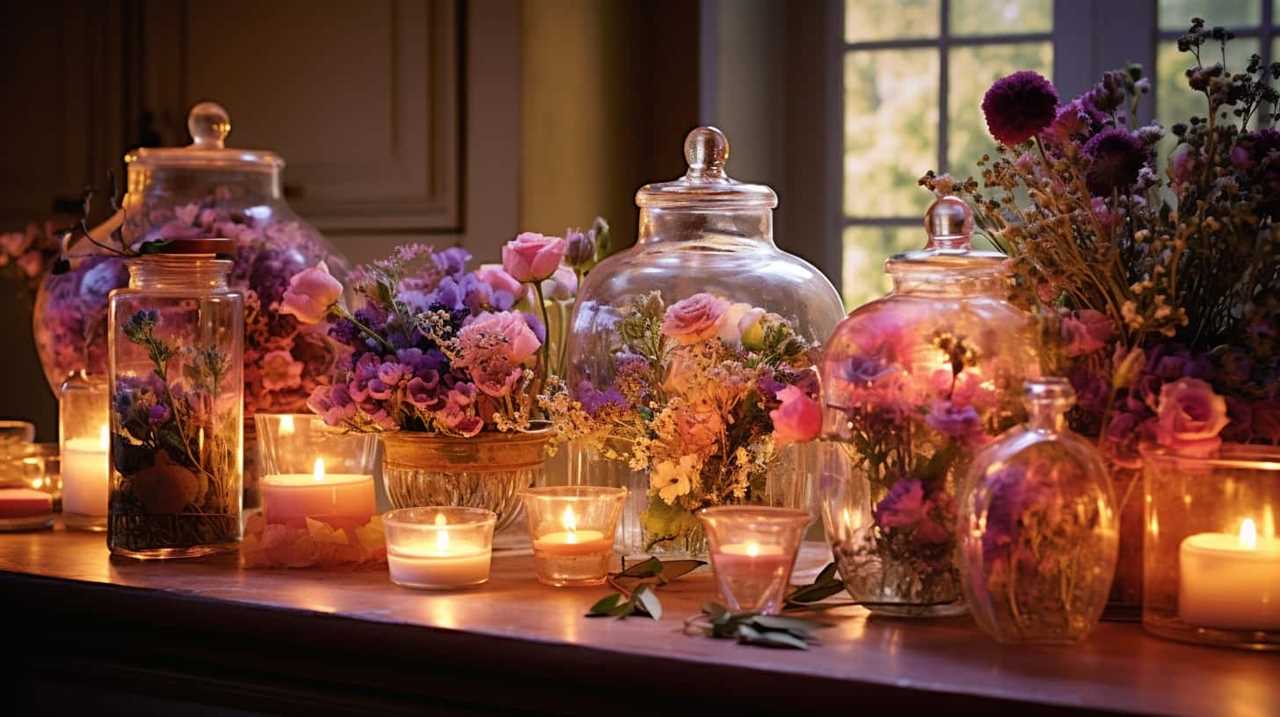
Are Votive Candles Safe to Burn Indoors?
Yes, votive candles are safe to burn indoors. They can be used as decorative elements in home decor and are often lit during power outages.
Can Votive Candles Be Used for Meditation or Relaxation Purposes?
Votive candles can definitely be used for meditation or relaxation purposes. They create a peaceful ambiance and their soft flickering light helps to calm the mind. Incorporating votive candles into meditation techniques can enhance the benefits of relaxation.
Are There Any Specific Colors or Designs That Are Traditionally Used for Votive Candles?
Traditional colors and designs for votive candles vary across different cultures and religions. These colors and designs often hold symbolic significance, representing different intentions or prayers.
Conclusion
In conclusion, votive candles hold a rich cultural and religious significance in various traditions around the world. From Christianity to Judaism and Islam, these candles play a vital role in rituals and symbolize devotion, gratitude, and prayer.

Whether you’re looking to create your own DIY votive candles or purchase them, they can be easily found in various stores.
So light a votive candle and let its warm glow fill your space with peace and tranquility.
